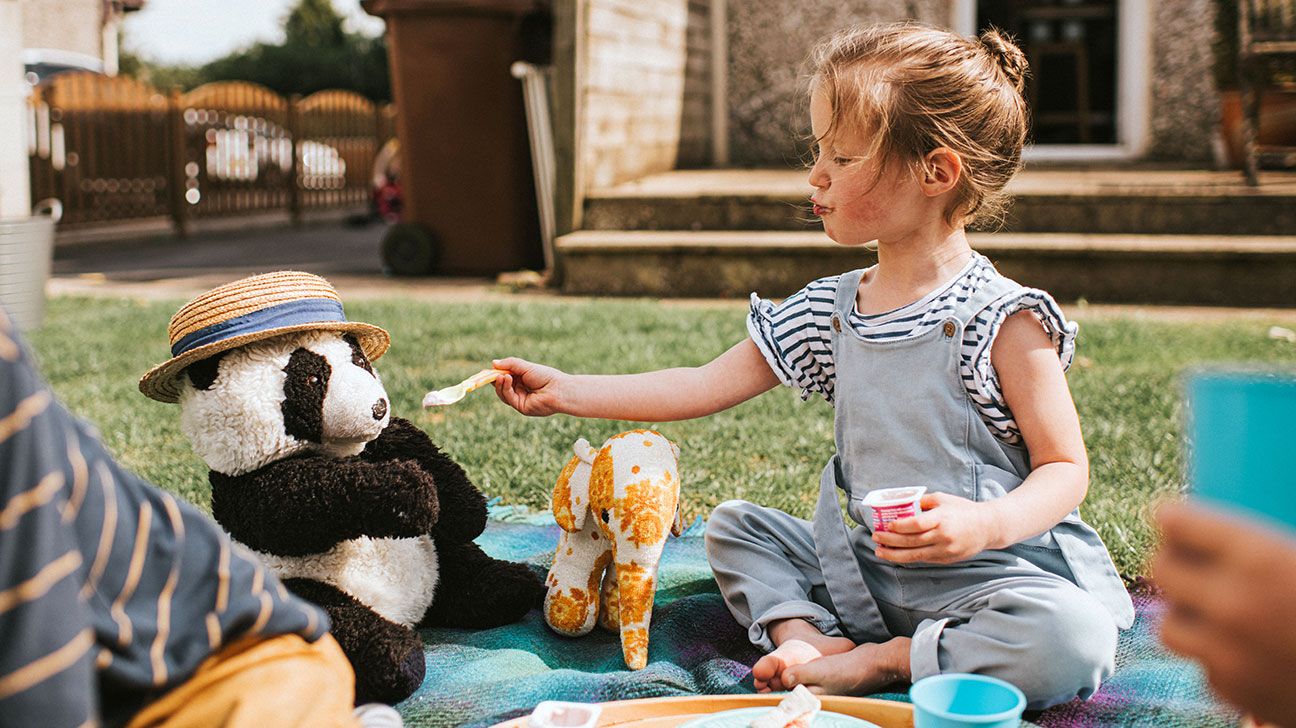Prosocial behaviors are voluntary actions intended to help others. Children display prosocial behavior when they share toys, comfort someone who is sad, or work together to complete a task.

Every day, individuals all around the world engage in prosocial behavior when they offer compassion to others, help with tasks, and share necessary resources. Prosocial behavior allows society to function smoothly, and even very young children can demonstrate it.
It’s important for adults to encourage prosocial behavior in children to help with their social development. Children can learn prosocial behavior through the actions they see modeled and the stories that are read to them.
In addition to the information below, you can find more information about childhood development here.
Examples of prosocial behavior include:
- sharing items with others
- donating money
- volunteering time to an organization
- comforting someone who is hurt
- cooperating with others to complete a task or play a game
- protecting others from harm
Prosocial behavior is
Prosocial behavior helps children to:
- develop positive relationships
- feel a sense of belonging
- increase self-confidence
- become more mindful and resilient
Prosocial behavior allows communities to:
- meet people’s needs
- stay safe
Prosocial behavior may also
It’s debated whether prosocial behavior development is spontaneous or linked to cognitive advances (developmental growth in a child’s ability to think and process information).
People who believe prosocial behavior develops in a more spontaneous manner point to research showing very young babies displaying prosocial behavior, like responding to others in distress.
These babies’ prosocial behaviors don’t make much sense within many theories of infant development, but at such a young age, it’s possible that the behaviors may be explained by the baby’s desire to imitate rather than a conscious decision based on empathy. Later, as the child matures and the brain further develops, prosocial behaviors could be based more on deeper levels of decision and less on imitation.
One way that even very young children seem inspired to engage in prosocial behavior is by observing it in the adults around them. Praise from parents and caregivers also serves to inspire young children to practice behaviors like sharing, taking turns, and helping.
Modeling prosocial behavior
Verbally expressing your thought process while modeling prosocial behavior is an important way to teach empathy and encourage prosocial behavior.
For example, you might say, “I know hugs can help me feel better when I’m crying. I saw Jamie crying after their balloon popped. I bet Jamie would feel better if I gave them a hug and offered them a turn with my toy.” Then, you can hug Jamie or ask them if they need a hug while the child is watching.
Read books that encourage prosocial behavior
Another way you can help your child develop prosocial behavior is to point it out in books.
Children of any age can be engaged with stories where characters share, show empathy, take turns, and cooperate. When there are only a few words in a book, you can often find examples in the book’s illustrations to point out.
Play together
Imaginative play with your child offers opportunities to practice prosocial behavior. You can create scenarios that allow your child to show empathy, take turns, and work together with you to complete a task.
When children are playing together, adults can also encourage prosocial behavior in the feedback they offer. As children interact, adults can praise sharing, acts of empathy, and teamwork.
What are prosocial behaviors in the classroom?
Sharing, helping, cooperating, and comforting are some prosocial behaviors that you may see demonstrated by children in a classroom.
What factors contribute to children’s prosocial behavior?
Some factors that
Prosocial behaviors are voluntary actions intended to benefit others. Prosocial behavior offers important personal and community benefits. Sharing, helping, or comforting are some ways that children can demonstrate prosocial behavior.
Children may develop prosocial behaviors by observing the adults around them. It can also be learned through the stories children hear. Prosocial behavior can be practiced in play with the help and encouragement of adults.









